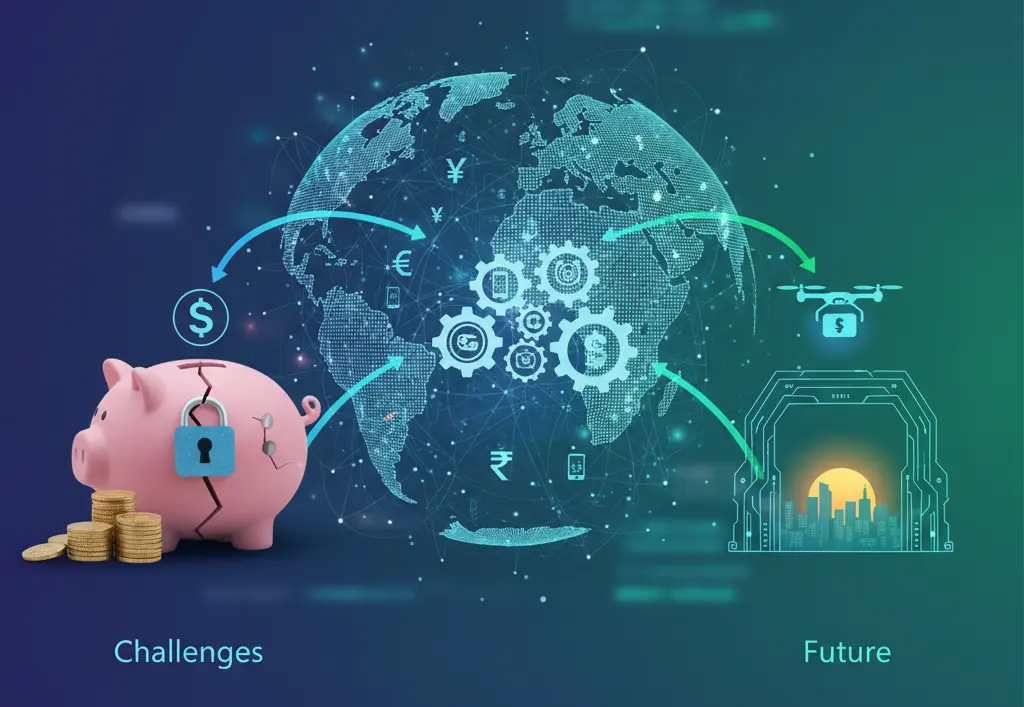
The world is moving money faster than ever before. From overseas workers supporting families to businesses expanding internationally, cross-border payments have become the financial lifeline of the global economy. According to the World Bank, remittance flows to low- and middle-income countries surpassed $860 billion in 2024, a number expected to grow steadily through 2025.
This massive opportunity has sparked growing interest among entrepreneurs and fintech innovators looking to enter the money transfer space. But building a compliant, profitable, and globally scalable money transfer business requires more than just technology — it demands regulatory understanding, trusted partnerships, and a strong digital infrastructure.
This guide provides a global overview of how to start a money transfer business — covering licensing, technology, compliance, and innovation — so your venture can compete across international markets.
The money transfer and remittance industry is one of the most dynamic sectors in fintech today. Every continent has its own drivers and opportunities:
In regions like Sub-Saharan Africa, mobile-based remittances have transformed financial access — Kenya’s M-Pesa alone processes billions annually. Meanwhile, European startups are leveraging PSD2 and SEPA regulations to simplify cross-border payments. In North America, fintech disruptors are competing with traditional giants by offering faster, lower-cost solutions through app-based transfers.
At its core, a money transfer business enables individuals or companies to send and receive funds domestically or internationally. Transactions can take place via bank accounts, mobile wallets, card networks, or even cash agents.
Key components of the model include:
Revenue is typically generated through transaction fees, exchange rate margins, and premium services like instant transfers. Some businesses focus on niche corridors (for instance, UAE–India or US–Mexico), while others adopt a global approach with multi-currency support.
The global remittance industry is vast, but success depends on finding your niche. Before launching, conduct in-depth market analysis to understand transfer corridors, user behavior, and regulatory dynamics.
For example:
Understanding underserved markets or high-cost corridors helps position your business strategically. Focus on where you can offer unique value — such as faster delivery, lower fees, or innovative digital tools.
Regulation is the foundation of trust in the money transfer ecosystem. Every region has distinct frameworks, but most align with international standards set by the Financial Action Task Force (FATF) and supported by Anti-Money Laundering (AML) and Counter Financing of Terrorism (CFT) principles.
Key regulatory requirements include:
Examples of licensing requirements worldwide:
Failure to meet regulatory standards can result in heavy fines or license suspension, so early consultation with legal and compliance experts is essential.
A money transfer business thrives on its technology stack. The platform you build or license must be fast, secure, scalable, and interoperable.
Key technology elements include:
Modern fintechs are also leveraging blockchain for transparent settlement and smart contracts to automate compliance checks. Artificial intelligence (AI) is increasingly used for risk scoring and anomaly detection, improving the speed and security of cross-border transfers.
No money transfer business operates in isolation. Global expansion relies on partnerships with banks, correspondent networks, and other licensed payment institutions.
Examples of partnership structures:
Interoperability — the ability for different payment systems to “talk” to each other — is key. Many countries are now developing national instant payment systems (like India’s UPI, Brazil’s PIX, or Europe’s SEPA Instant), allowing faster settlement across networks.
Customer experience determines brand trust and user retention. A modern money transfer platform must be intuitive, fast, and transparent.
Consider these design principles:
Accessibility also matters — offering both mobile and web-based solutions ensures inclusivity across different user segments.
Building the technology is only half the equation — you must also acquire and retain customers.
Effective growth strategies include:
Localization is another powerful tool. Tailoring campaigns by culture, language, and local remittance habits creates a sense of trust and relevance in each market.
Once established, the next challenge is scaling globally without compromising compliance or customer experience. This requires operational efficiency and innovation.
Emerging trends that will define the future of the industry include:
Sustainable scaling also means monitoring liquidity, exchange risk, and regulatory changes across regions — ensuring resilience in a rapidly evolving environment.
Starting a money transfer business in 2025 offers a unique opportunity to participate in one of the most transformative sectors of global finance. However, success requires a balance of innovation, compliance, and trust.
Entrepreneurs who combine cutting-edge technology with a deep understanding of global regulatory landscapes will not only build profitable businesses but also contribute to greater financial inclusion worldwide.
The future of remittances is digital, interconnected, and real-time. For those ready to innovate responsibly, now is the moment to act.
Want to see how a ready-made platform can accelerate your growth?
Book a demo or consult with us at RemitSo today to see how our platform can power your growth.
Licensing varies by region but generally involves registering as a Money Services Business (MSB) or Payment Institution with local regulators.
Depending on the country, technology choice, and scope, capital requirements can range from $50,000 for small startups to several million for global operations.
Yes, partnerships with banks or settlement institutions are essential to manage liquidity, compliance, and currency exchange.
Historically, high-volume corridors include US–Mexico, UAE–India, and Europe–Africa. Profitability often depends on fee structure and operating efficiency.
By leveraging APIs, automation, and blockchain, fintechs minimize intermediaries, enabling faster and cheaper transactions.
Global standards such as FATF, AML, and KYC apply, along with regional frameworks like PSD2 in Europe or FinCEN rules in the US.
Depending on licensing timelines and integrations, it typically takes between 6 to 18 months to go live.
The future lies in real-time global interoperability, blockchain integration, and embedded financial ecosystems — making cross-border payments seamless and affordable.

